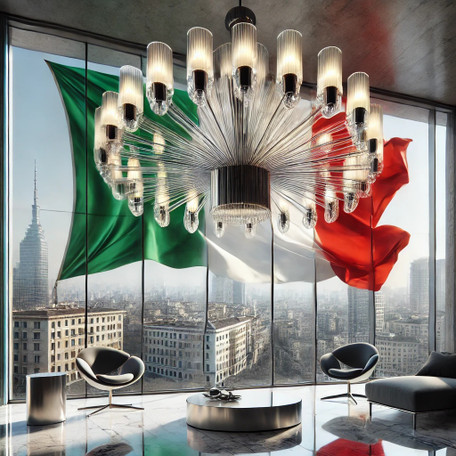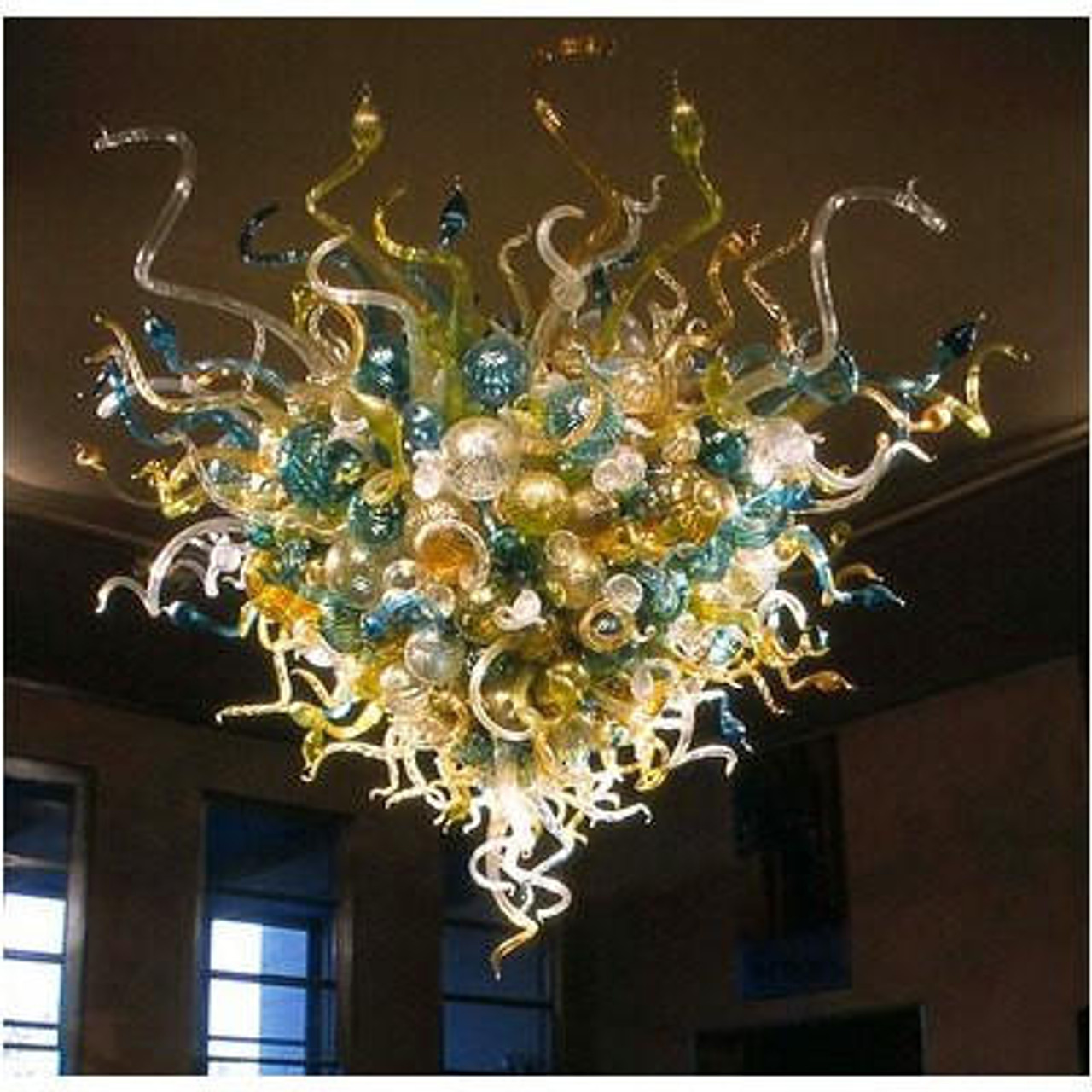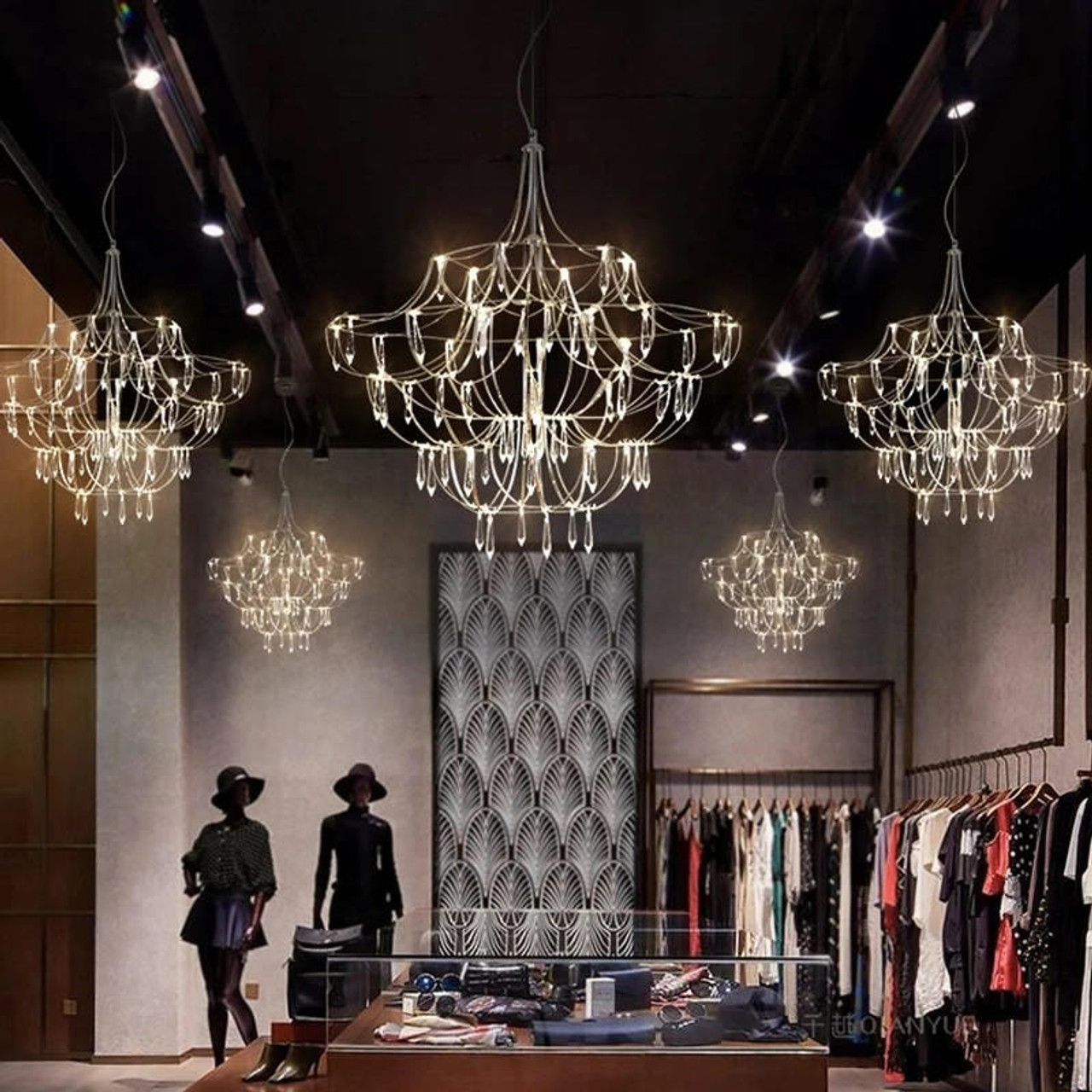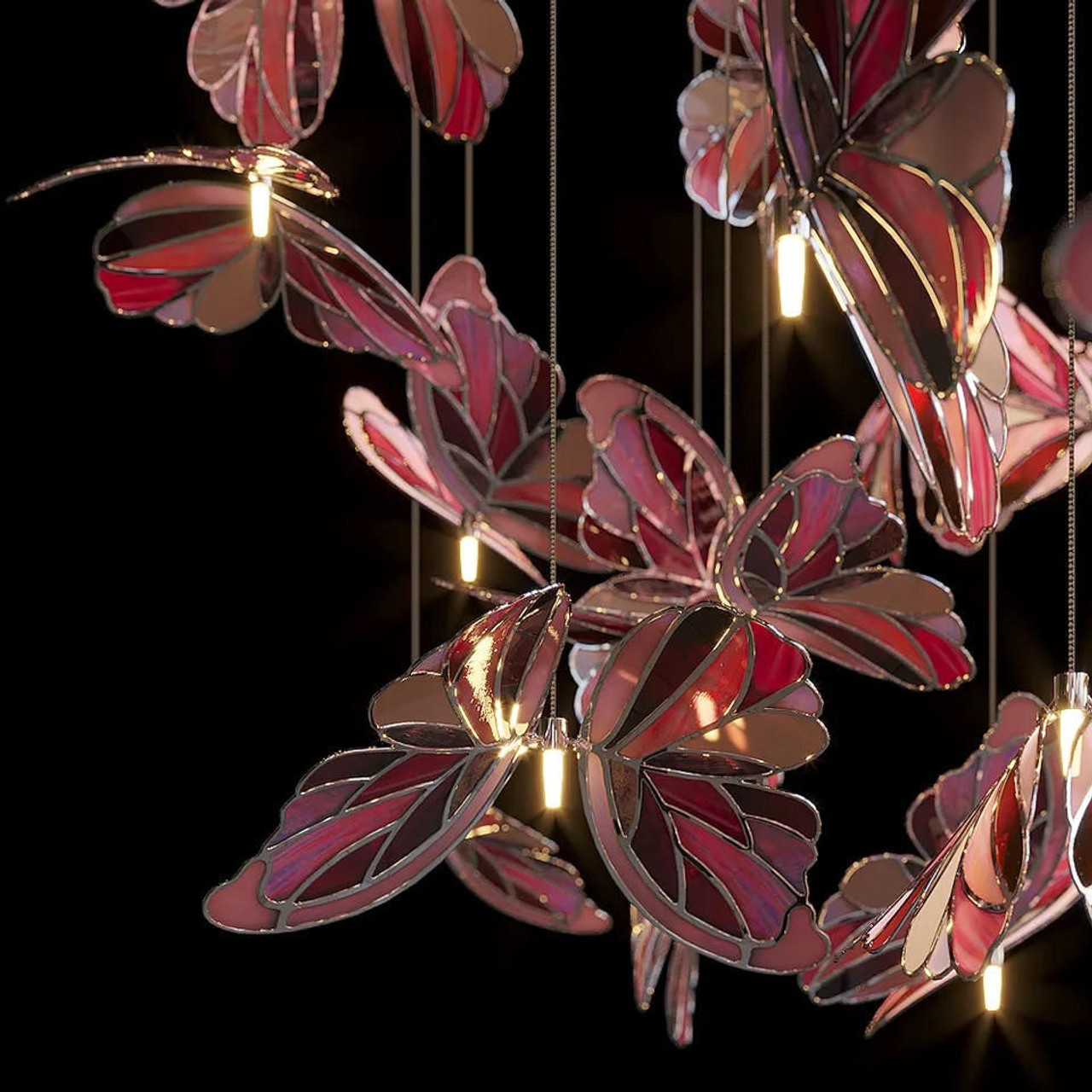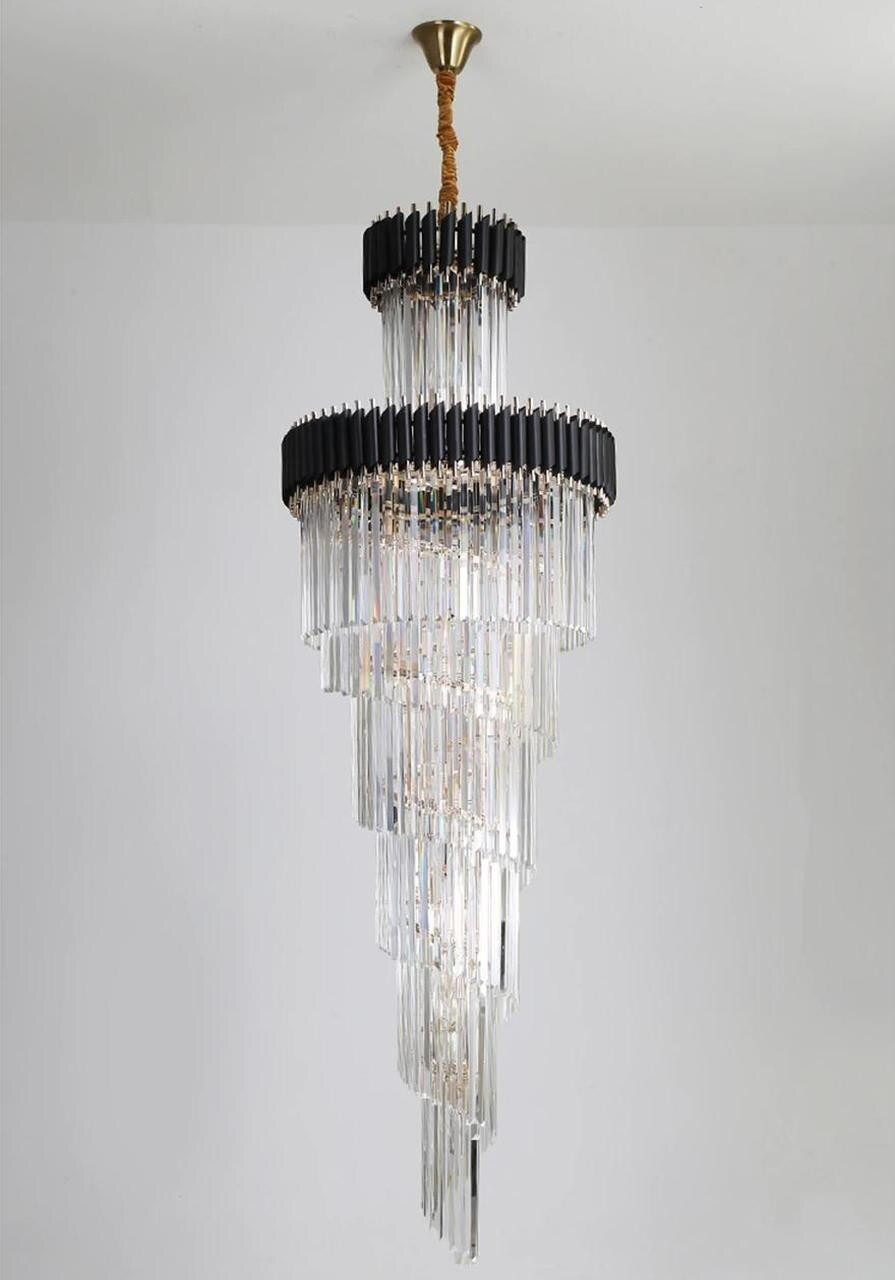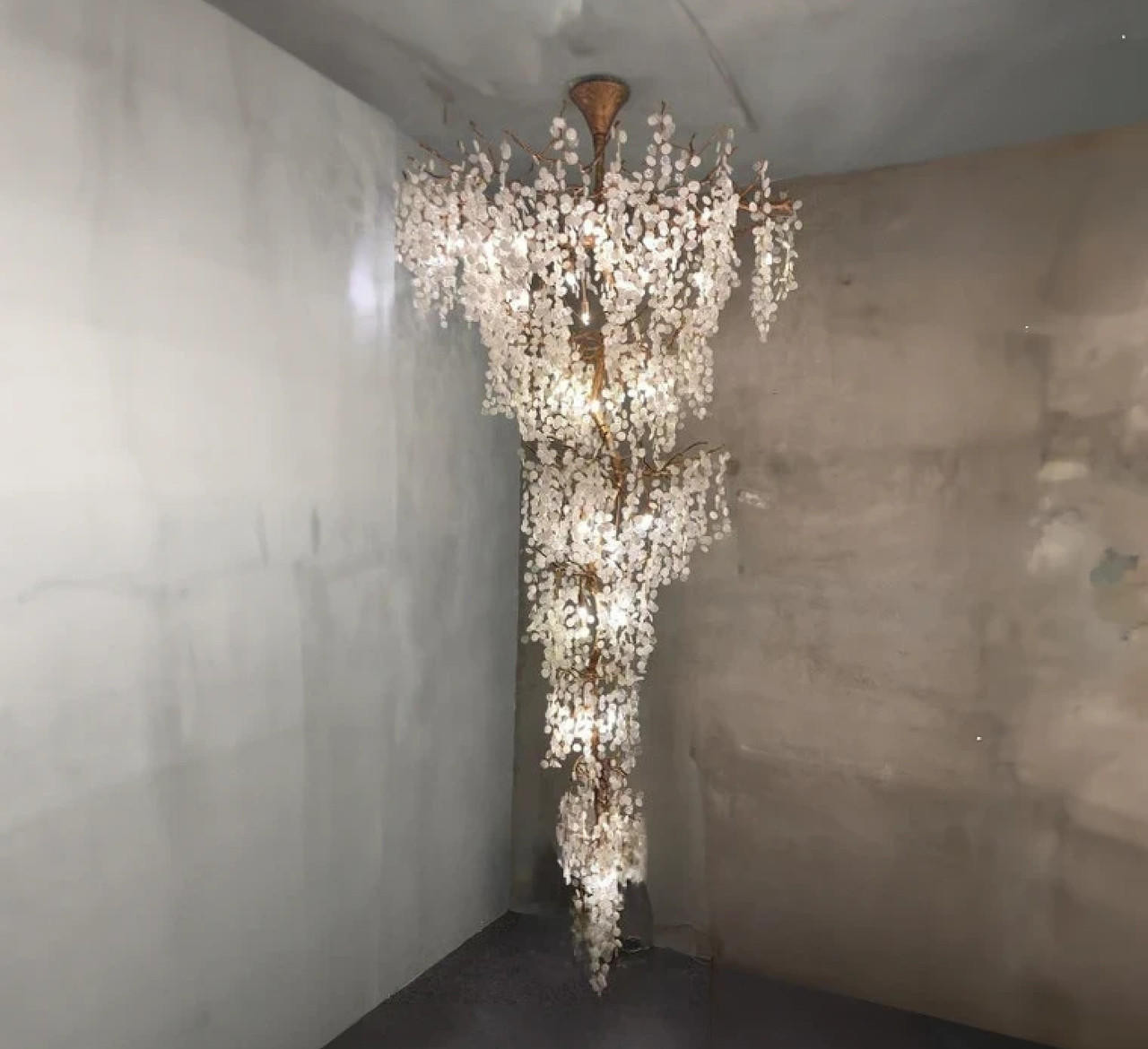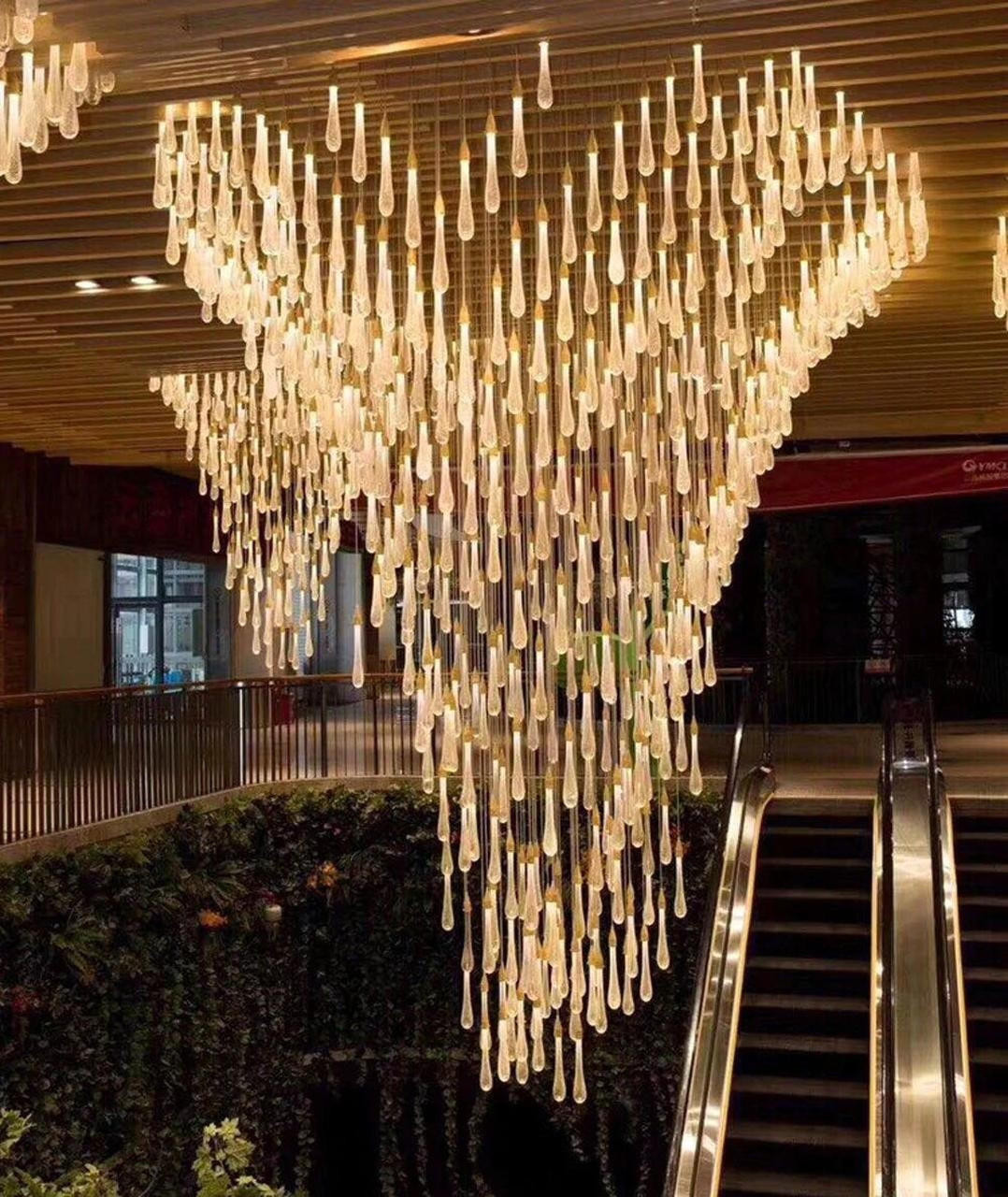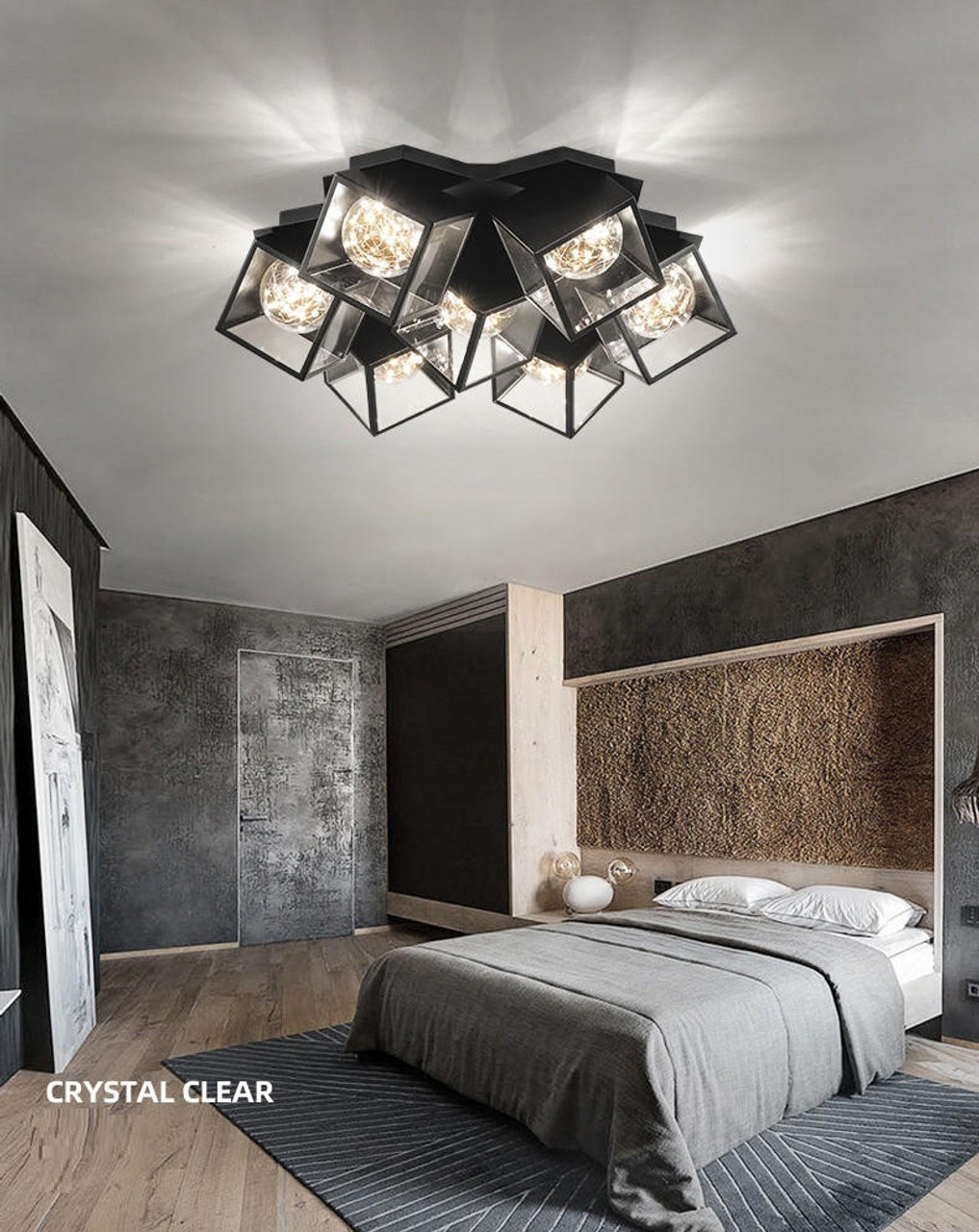The Evolution of Italian Chandelier Style: From Classic to Contemporary
Posted by Mary Jenkins - Architectural designer on Sep 12, 2024
The Italian chandelier is more than a lighting fixture. It is a form of expression, a distillation of Italy’s illustrious design history, and a symbol of aesthetic luxury. To trace the evolution of the Italian chandelier style is to witness a masterclass in craftsmanship, a meeting point of tradition and innovation that has endured through centuries. Each era of design, from the Renaissance to the contemporary, leaves an indelible mark on the development of Italian chandeliers, blending form, function, and a deep reverence for artistic precision. It is this convergence of history and modernity that has kept the Italian chandelier both timeless and relevant.
1. The Origins of Italian Chandelier Style
To begin any conversation about the Italian chandelier style, one must start in Venice—the birthplace of Murano glassmaking. The Renaissance was a golden age for Italy, and nowhere was this more evident than in its artistic contributions to architecture and interior design. Venetian chandeliers, known for their breathtaking complexity, came to epitomize the opulence of Italian craftsmanship. Crafted from the delicate, yet durable, Murano glass, these chandeliers illuminated the homes of aristocrats, nobility, and churches alike.
The chandeliers of the Baroque and Rococo periods were nothing short of extravagant. Known for their elaborate, gilded frames, these chandeliers often featured swirling arms and intricate embellishments, their design aligned with the larger-than-life sensibilities of the time. Murano glass chandeliers, particularly the iconic Rezzonico chandelier, exemplified this excess. Made by the finest Venetian glassmakers, these multi-tiered chandeliers hung like shimmering jewels from the palatial ceilings of Venetian villas.
The Rezzonico style, named after the noble family for whom they were originally created, remains synonymous with the grandeur of Murano glass. The chandeliers were adorned with floral embellishments, leaves, and scrolls—each element an example of the supreme technical skill of the glassblowers who crafted them. These designs weren’t mere lighting fixtures; they were declarations of wealth and taste, testaments to the artisans who dedicated their lives to perfecting the craft.
2. The Influence of Italian Art Movements on Chandelier Design
With the arrival of Neoclassicism, the pendulum swung from Baroque’s maximalism to more restrained, symmetrical designs. The Italian chandelier style was influenced by the emerging aesthetic that valued balance and simplicity. In this period, chandeliers still retained their ornate qualities but introduced cleaner lines and simpler, more geometric forms. The marriage between functionality and form was beginning to emerge, a theme that would carry forward into the next century.
Moving into the 20th century, the Art Nouveau and Art Deco movements brought even more radical changes to the Italian chandelier style. Designers like Paolo Venini, who founded the glassmaking brand Venini in the 1920s, helped reshape the role of chandeliers in modern interiors. Venini’s designs, while still relying on Murano glass, departed from the Rococo excesses of the past and embraced fluid, organic forms. This period saw the introduction of color and abstraction in glasswork, turning chandeliers into pieces of modern art. Venini’s glasswork would become emblematic of the Art Deco period, where streamlined designs met the exuberance of decorative details.
In addition, Gio Ponti, a visionary of Italian modernism, contributed to the evolution of the Italian chandelier with designs that showcased both minimalism and grandeur. Working through his company FontanaArte, Ponti and his contemporaries like Pietro Chiesa incorporated elements like stained glass and metal into chandelier design, creating timeless pieces that continue to define Italian modernism.
3. The Post-War Renaissance: Mid-Century Modernism in Italian Lighting
Post-World War II Italy was a crucible of creativity, where designers found new ways to express the tension between traditional craftsmanship and the drive for innovation. The Italian chandelier, once again, became a canvas for experimentation during the mid-century modern era. This period saw the rise of minimalist and functional design principles that would forever change the course of Italian lighting.
Gino Sarfatti, one of the most influential lighting designers of the 20th century, redefined the Italian chandelier style through his company Arteluce. Sarfatti’s chandeliers focused on functionality, using modular structures and new materials such as aluminum, brass, and chrome. He designed chandeliers that were sleek and geometric, far removed from the opulence of the Rezzonico chandeliers of the past. Sarfatti’s emphasis on versatility made his designs revolutionary; his chandeliers could be adapted to various interiors, whether they were grand ballrooms or modest apartments.
Another name synonymous with mid-century Italian lighting is Achille Castiglioni, whose work for Flos changed the paradigm of lighting design. Castiglioni’s chandeliers, much like Sarfatti’s, were as much about function as they were about form. He employed industrial materials and experimented with shapes that ranged from the minimal to the whimsical. His chandeliers often blurred the lines between lighting fixture and sculpture, giving rise to iconic designs that remain beloved by contemporary architects and designers.
4. Contemporary Italian Chandelier Style: Tradition Meets Innovation
A key feature of contemporary Italian chandelier design is its ability to merge the old with the new. Traditional Murano glass techniques, such as intricate hand-blown elements, continue to play a central role in the production of high-end chandeliers, but these techniques are now applied in ways that reflect modern tastes. Instead of the opulent, multi-tiered chandeliers of the Baroque or Rococo periods, modern designs tend to be more minimalist, often incorporating clean lines, geometric shapes, and neutral color palettes. This evolution allows for these chandeliers to seamlessly fit into contemporary interiors without losing the sense of grandeur and craftsmanship they have historically represented.
Take, for example, the work of Barovier & Toso, a venerable Venetian glassmaking company that has been creating Murano glass chandeliers for over seven centuries. Their contemporary collections blend the elegance of classic glassmaking with modern design sensibilities, resulting in chandeliers that are both timeless and forward-thinking. The Taif Chandelier is a perfect example—it retains the elaborate craftsmanship of traditional Murano glass but is designed with a contemporary silhouette, making it suitable for modern interiors.
Innovative Materials and Technologies
While glass continues to dominate Italian chandelier design, contemporary designers are experimenting with new materials such as metal, brass, acrylic, and even LED lighting technologies. The use of LEDs has allowed for greater flexibility in design, enabling the creation of lighter, more energy-efficient chandeliers that can be scaled down for smaller spaces or expanded for dramatic effect in large rooms. Designers are also incorporating sustainable materials into their chandeliers, making them not only beautiful but environmentally friendly as well.
Flos, a well-known Italian lighting company, is a pioneer in the use of modern materials and technologies in chandelier design. Their 2097 Chandelier, designed by Gino Sarfatti, reinterprets the traditional multi-arm chandelier with a minimalist, industrial edge. Featuring bare bulbs suspended from thin metal rods, this design showcases the essence of lighting in its most simple form while still exuding the grandeur and elegance typically associated with chandeliers. It’s a prime example of how contemporary Italian chandelier design is able to strip down to its essentials while still maintaining visual impact.
Patrizia Volpato, another contemporary designer, is known for pushing the boundaries of chandelier design. Her creations often feature unconventional shapes and innovative materials, such as Swarovski crystals combined with hand-blown glass, resulting in chandeliers that feel both luxurious and avant-garde. Volpato's designs demonstrate the fluidity of Italian craftsmanship, where age-old traditions are continually reinterpreted to fit the aesthetics and demands of the 21st century.
The Impact of Modernism on Italian Chandelier Style
Modernism has had a profound impact on the Italian chandelier style, leading to more experimental, less ornamental approaches. Many contemporary chandeliers feature asymmetry, irregular forms, or even abstract designs, diverging from the historical focus on symmetry and elaborate ornamentation. These modern pieces play with light and shadow in new ways, often creating dynamic visual experiences within a space.
Artemide, another iconic Italian lighting brand, has been at the forefront of integrating modernist design principles into chandelier production. Known for their minimalist, architectural approach to lighting, Artemide's chandeliers often prioritize functionality, yet retain an artistic and sculptural quality. Their Logico Chandelier, designed by Michele De Lucchi and Gerhard Reichert, exemplifies this balance. The blown-glass diffuser of the Logico series creates an elegant, cloud-like structure, which not only serves as a light source but also acts as a visual centerpiece.
Sculptural Forms and Statement Pieces
In contemporary interiors, chandeliers have become more than just light fixtures—they are now considered art installations that make bold, artistic statements. Italian designers have embraced this trend, producing chandeliers that are sculptural and highly expressive. Whether suspended in luxury hotels, modern galleries, or residential homes, these chandeliers command attention and act as focal points in their respective environments.
Designers like Piero Lissoni and Giovanni Barbato have created chandeliers that push the boundaries of traditional lighting, offering forms that evoke abstract art and challenge conventional ideas of design. These sculptural pieces are often asymmetrical and incorporate unexpected materials, making them the epitome of contemporary Italian craftsmanship.
In conclusion, the Italian chandelier style continues to evolve with the times, maintaining its roots in Venetian craftsmanship while embracing modern aesthetics, materials, and technologies. Today’s Italian chandeliers are a perfect blend of tradition and innovation, allowing them to complement both classic and contemporary spaces. Whether you prefer the delicate craftsmanship of Murano glass or the bold minimalism of modern designs, Italian chandeliers remain as relevant today as they were centuries ago, symbolizing the artistry and craftsmanship that defines Italian design.
5. Italian Chandelier Craftsmanship: An Unmatched Legacy
To fully understand the beauty and complexity of the Italian chandelier style, one must delve into the legacy of craftsmanship that defines this timeless art form. It is the skill of the artisan, the knowledge passed down through generations, and the dedication to perfection that distinguishes Italian chandeliers from their counterparts. This tradition, particularly in Murano, is one of meticulous attention to detail, where every component—from the glass arms to the smallest decorative finial—is a testament to Italy’s enduring commitment to craftsmanship.
Murano glass, in particular, holds a storied place in the world of design, and chandeliers crafted from this delicate material are among the most iconic symbols of Italian lighting artistry. The hand-blown glass techniques of Murano have remained largely unchanged for centuries, a fact that is both a tribute to the mastery of Italian artisans and an indication of the rarity of this craft. These methods are not just learned; they are inherited, passed down through a lineage of glassmakers who consider the creation of a chandelier as much a form of artistic expression as it is a practical task. Murano glass chandeliers, like the intricate works produced by Barovier & Toso, are renowned for their vibrant colors, intricate designs, and flawless construction.
Consider the Palazzo Ducale in Venice, which houses exquisite examples of classic Murano chandeliers—each one a dazzling explosion of glass flowers, leaves, and ribbons suspended in the air. These chandeliers, which appear almost weightless in their complexity, serve as testaments to the patience and precision of their makers. The Palazzo Ducale’s chandeliers are perfect examples of the classic Rezzonico style, named for the noble family who first commissioned such grand creations. The Rezzonico chandeliers, with their layered tiers and multiple arms, continue to be recreated by Murano glassmakers today, their design virtually untouched by time.
In the modern era, the balance between traditional craftsmanship and technological innovation remains paramount. Artemide, a leading Italian lighting company, continues to work with artisans to incorporate modern materials like carbon fiber and LEDs into their chandelier designs, blending craftsmanship with sustainability. The result is an Italian chandelier style that honors its past while adapting to the future, always maintaining the handcrafted quality that defines Italian artistry.
These chandeliers, whether gracing the ceilings of grand Italian palazzos or adding elegance to modern luxury homes, are more than just functional objects—they are enduring symbols of Italy's unparalleled commitment to craftsmanship, artistry, and design evolution.
6. The Role of Italian Chandeliers in Modern Interiors
The Italian chandelier style is no longer confined to grand palazzos or historical estates; it has become a versatile design element that can elevate a variety of modern interiors. The integration of chandeliers into contemporary spaces has redefined the role they play, not just as functional lighting fixtures, but as bold artistic statements that anchor a room’s aesthetic. Italian chandeliers today are as much about sculptural form as they are about illumination.
Classic Meets Contemporary
One of the most fascinating aspects of Italian chandeliers in modern interiors is the seamless blend of historical grandeur with contemporary design principles. A Murano glass chandelier, for example, with its intricate hand-blown glass elements and colorful flourishes, can become the centerpiece of an otherwise minimalist living room. The juxtaposition of a traditional glass chandelier against sleek, modern furniture and neutral tones creates a dramatic contrast that exudes sophistication and cultural depth. Murano chandeliers, especially, hold a timeless quality, but when placed in contemporary settings, they don’t feel outdated—they feel refreshed, as if their heritage brings a touch of old-world luxury into the present.
Modern Interpretations in Contemporary Spaces
Modern designers are also reimagining the Italian chandelier style by utilizing innovative materials and minimalist aesthetics that better suit today’s interiors. Brands like Flos and Luceplan have adopted cutting-edge technology in their chandelier designs, incorporating LED lighting and energy-efficient systems that cater to modern sustainability concerns. These chandeliers, which often feature geometric shapes, bare bulbs, or futuristic silhouettes, are sculptural in their simplicity but no less grand in their ability to command a space. Such designs have gained favor in luxury hotels, open-plan dining rooms, and high-ceilinged lofts where the drama of lighting takes precedence over its ornamentation.
Adapting to Different Spaces
The adaptability of the Italian chandelier style in various interior contexts is part of its enduring appeal. In dining rooms, chandeliers serve as focal points, often placed directly over tables to define the space and create an intimate, atmospheric setting. In entryways or grand staircases, larger-scale chandeliers make a powerful first impression, drawing the eye upwards and emphasizing verticality. Even in bedrooms, smaller-scale chandeliers are being used to bring an element of glamour and serenity, casting soft, warm light that complements minimalist or modern décor.
Influence of Italian Designers in Interiors Worldwide
Renowned interior designers like Patricia Urquiola and India Mahdavi often incorporate Italian chandeliers into their projects, demonstrating the global appeal of these lighting fixtures. For these designers, chandeliers are more than just lighting solutions; they are integral to the overall narrative of a room’s design, evoking a sense of grandeur, history, and Italian craftsmanship. Whether they opt for a classical Murano chandelier or a more modern, industrial-style fixture, these designers use Italian chandeliers to enhance the emotional and visual impact of their spaces.
In short, the Italian chandelier style continues to influence contemporary interior design in profound ways. Its evolution from elaborate Baroque fixtures to minimalist, sculptural pieces reflects not only changes in aesthetic preferences but also a commitment to preserving the artistry and craftsmanship of Italian glassmakers. Whether in modern lofts, luxury hotels, or intimate dining rooms, Italian chandeliers bring a sense of timeless beauty, artistic depth, and unmistakable elegance to any interior.
Conclusion: The Timelessness of Italian Chandelier Style
The Italian chandelier style has evolved over centuries, but its core remains the same: a commitment to craftsmanship, artistic expression, and the ability to transform a space. From the delicate glass of Murano to the modernist designs of Gino Sarfatti, each iteration of the Italian chandelier reflects the changing tastes of its time, while maintaining a connection to Italy’s rich artistic heritage.
Whether you’re captivated by the ornate chandeliers of the Baroque period or the sleek, functional designs of the modern era, one thing is clear: Italian chandeliers are not just fixtures—they are works of art. They tell the story of Italy’s design evolution, and their beauty endures, transcending trends and time.

